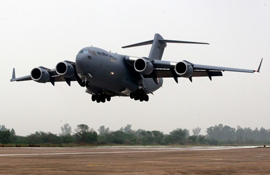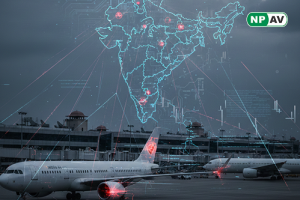Cyber Attack on IAF Aircraft During Myanmar Relief Mission: GPS Spoofing Alert

An Indian Air Force (IAF) C-130J aircraft flying over Myanmar during the Operation Brahma relief mission was hit by a dangerous GPS-spoofing cyberattack. The attack could have misled the aircraft, but the pilots swiftly switched to an internal system to stay safe. Here's what happened and why GPS spoofing is a growing cyber threat.
What Happened?
- While flying over Myanmar for earthquake relief, the IAF's C-130J aircraft faced a GPS spoofing attack – a cyber technique where fake signals are used to confuse satellite-based navigation systems.
How Did the Crew React?
- The pilots quickly switched to the Internal Navigation System (INS) to ensure the aircraft stayed on the correct path.
The Mission – Operation Brahma:
- India started Operation Brahma to help Myanmar after a 7.7 magnitude earthquake struck in March 2025, killing thousands and leaving the region in crisis.
Ongoing Relief Efforts:
- So far, 6 IAF aircraft and 5 Navy ships have delivered 625 MT of humanitarian aid including tents, medicines, food, and more.
Spoofing is Not New:
- India has seen over 465 GPS spoofing cases near the India-Pakistan border (Amritsar and Jammu) since November 2023.
What is GPS Spoofing?
- It’s a cyberattack where false GPS signals trick devices into thinking they are somewhere else – affecting aircraft, ships, or even mobile apps that rely on location.
Why This Matters:
- This incident shows that even humanitarian missions are not safe from cyber threats. Cybersecurity is no longer just about computers – it’s about national security, aviation safety, and protecting life-saving missions.
Net Protector’s Takeaway:
- GPS Spoofing is a Real Threat.
- Defense systems need advanced cyber protection.
- Cybersecurity must be part of every critical operation.
Let’s stay alert and support stronger cyber defense – because cyber attacks don’t care if it’s peace or war, rescue or relief.
0 Comment(s)






